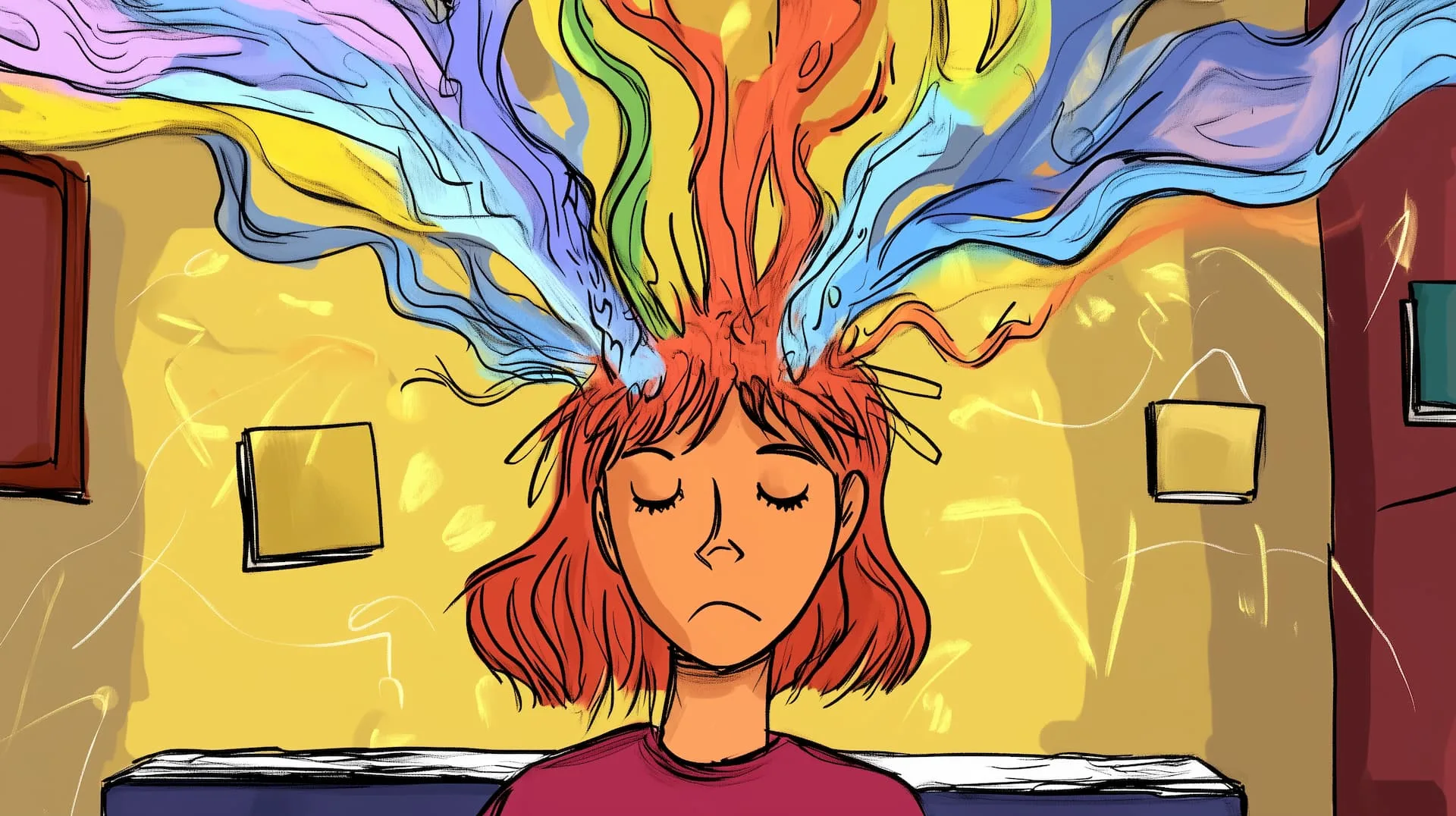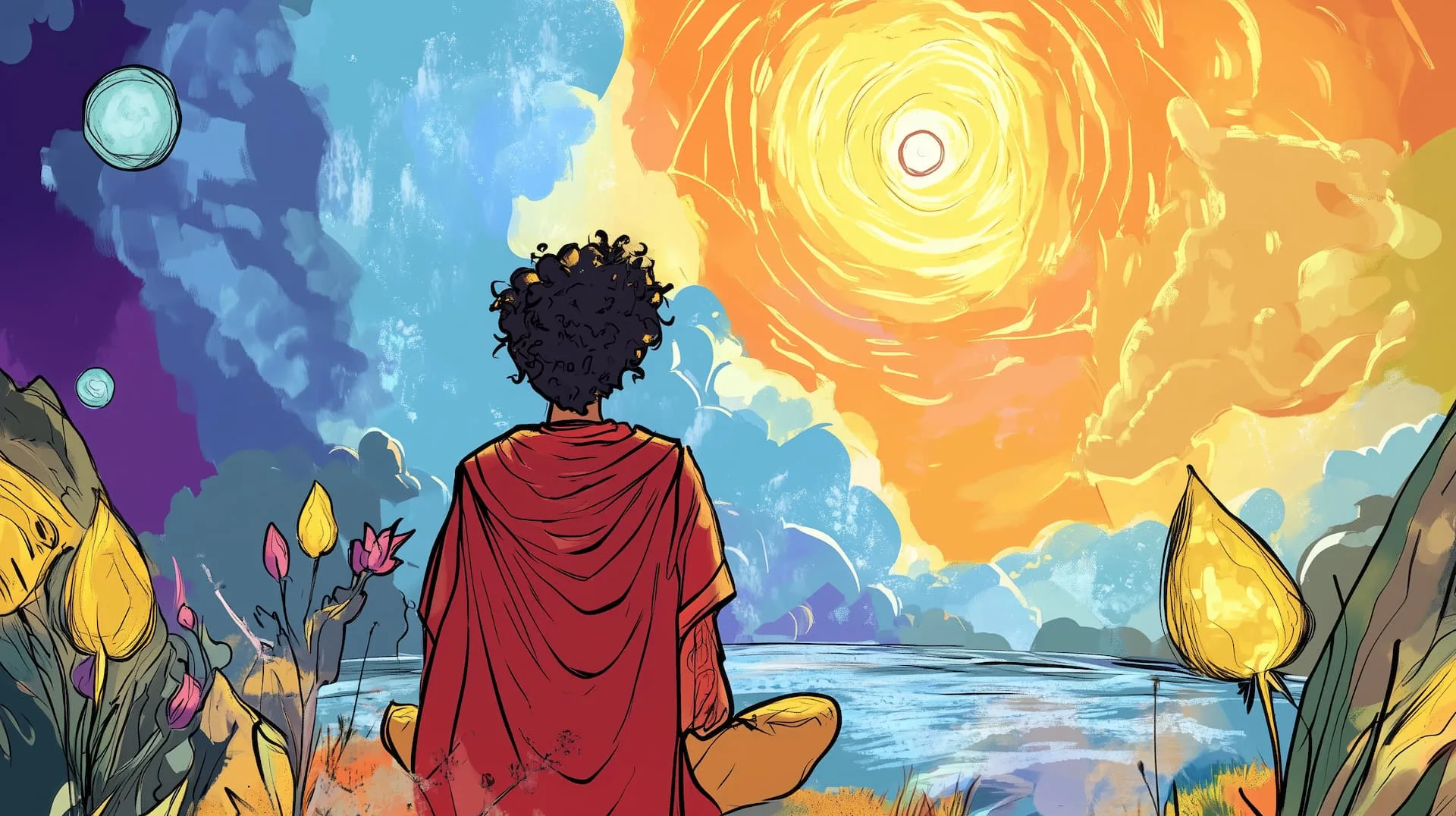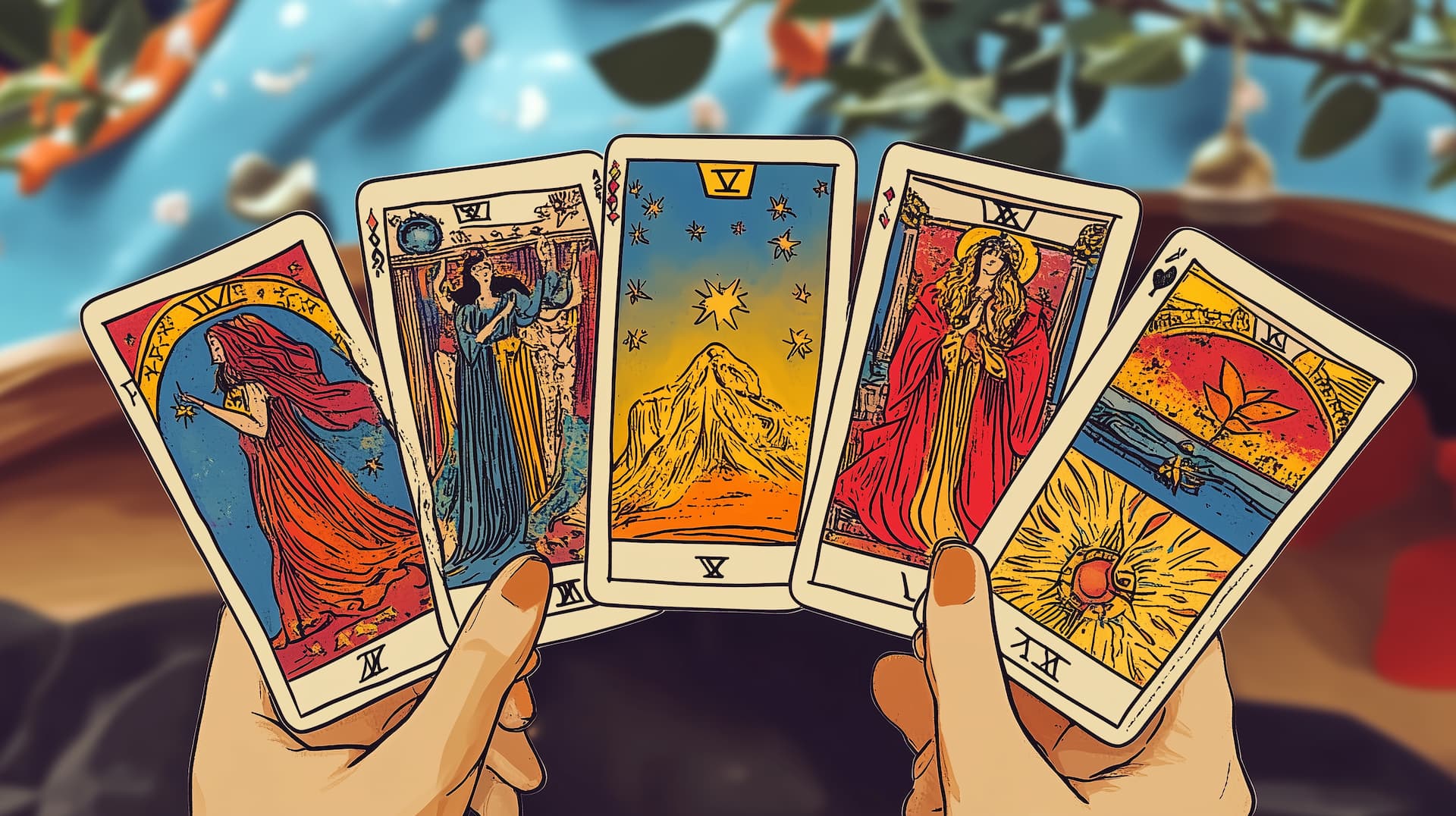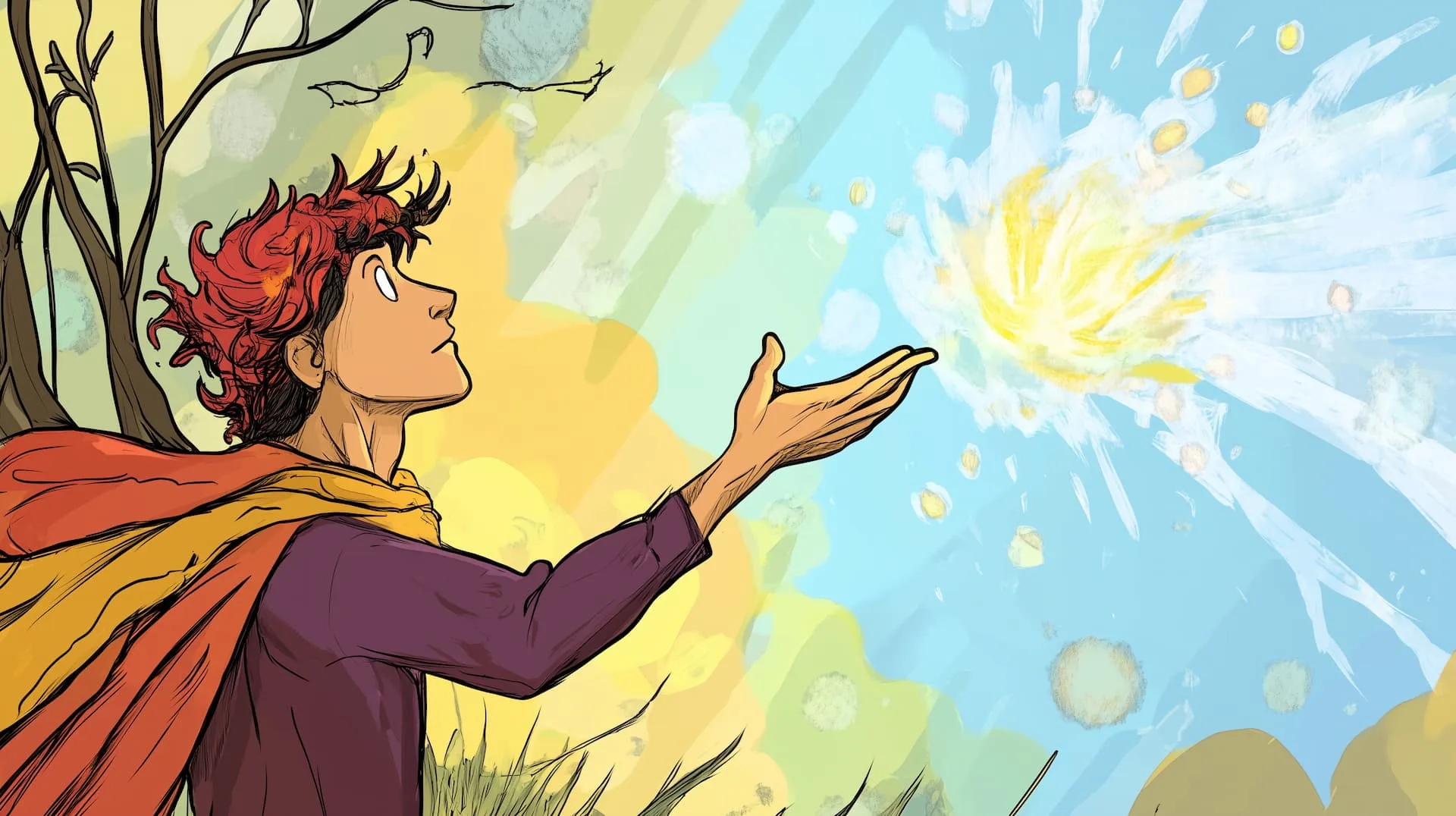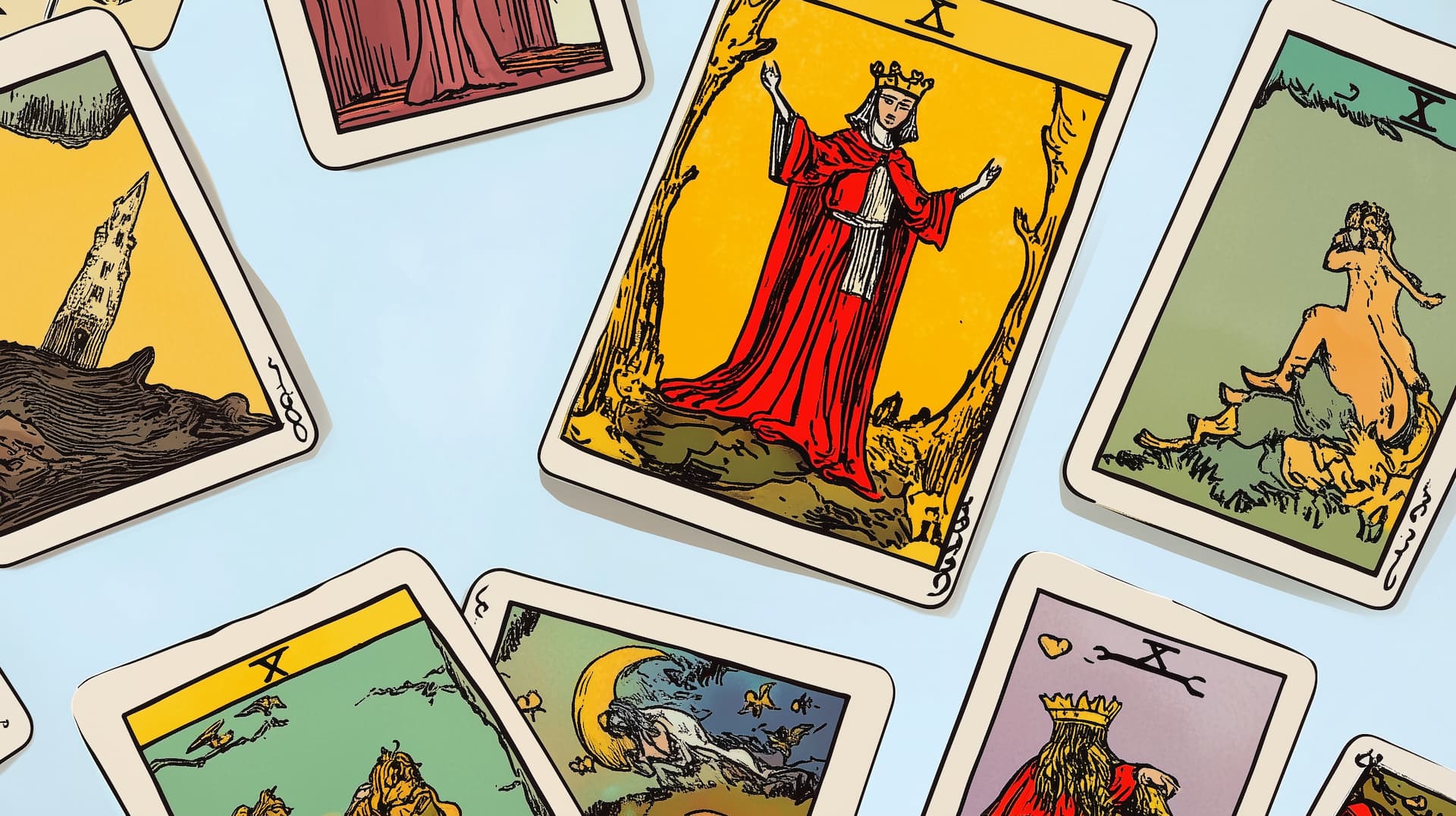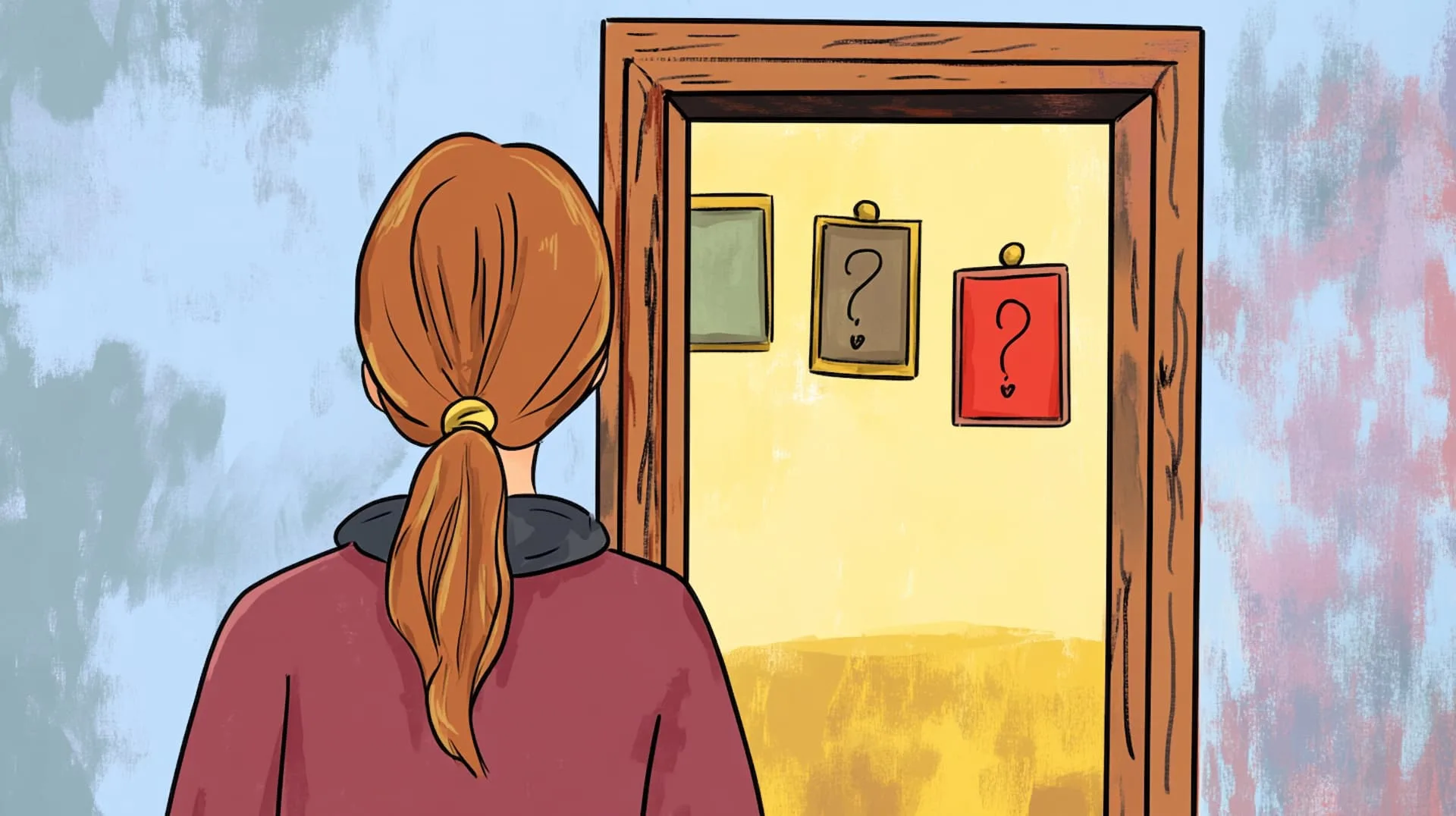
Tarot cards aren’t all about the actual card interpretation, suit and position. In fact, understanding colors in the tarot deck is just as important in the process and can push the meaning in one direction or another. The good news is color symbolism uses common sense, so you may already be aware of a thing or two.
There are quite a few different tarot decks out there, but when it comes to the classic one, color symbolism is the same. With these thoughts in mind, let’s see what each color means and how it can help you understand the cards you draw.
The tarot deck is extremely rich in symbolism. Every little detail could mean something, even if it’s something small that you may overlook at first. From this point of view, colors make no exception either, and they actually add a few layers to the interpretation of a card.
When analyzing colors, it’s important to know that not every tarot deck is the same, so the symbolism is irrelevant in some readings. It depends on the psychic reader and what deck they rely on.
Colors are more common in the western culture, which tends to dominate the culture these days. However, it’s just as important to understand that specific cultural narratives might be different.
In some situations, color symbolism could be related to cultural archetypes in terms of colors, but this isn’t always a general rule.
At the same time, apart from the classic color interpretations, different tarot decks may use different colors. Sometimes, they’re all about aesthetics. Other times, they follow a particular interpretive system.
Color symbolism in the classic tarot deck isn’t the first consideration during an interpretation. The type of reading determines the direction of the interpretation, then the questions associated with the reading, as well as the card.
The card and its position will hold most of the answers, but small details in the card depiction will consolidate the reading. The color goes in the same direction. While it does have an impact on the reading, it’s not always the main thing.
Colors aren’t always used for tarot reading purposes, but they can also indicate more details in terms of cleansing or aura interpretation. In such situations, they’re part of a more comprehensive process referring to color therapy, which doesn’t really have much to do with tarot.
Colors & Combinations in Tarot Readings
Like numbers or letters, colors have some sort of energy as well. Think about going out, when you need to choose what to wear. Your mood tells you which color to pick. Then, there are some general yet unwritten rules as well.
Most business people wear black. Red is associated with temptation. Wedding dresses are white to represent innocence. You don’t even need to think about it, but colors can and will change your mood, so people make associations.
Like everyone else, you have your own signature color and you’ll naturally gravitate towards it. With all these, based on behavior and mood, you could radiate other colors too.
In tarot readings, colors provide further information about a card. Each suit in the deck has a predominant color. Such colors relate to the elements associated with the suits. For example, the wands relate to fire, so they’re represented by yellow, red and orange.
They’re cheerful, but also warm. They make the reading lively, so they show a bit of enthusiasm in the interpretation.
On the other hand, the air relates to pale colors, such as pale blue or gray. That’s what the air is like. A darker nuance of gray could also indicate air, especially during a storm.
Seeing a wand card in a sword dominated spread means the wand brings in a bit of light in a stressful scenario. On the same note, a sword showing up in a wand dominated spread could indicate clouds on a sunny day. Things could be working well, but a light conflict is likely to arise.
Such comparisons and combinations go in more directions, but you get the point. Colors can and will influence the interpretation. Plus, they can be used further in different readings, even readings that don’t rely on tarot cards.
Color Meanings in Tarot Cards
Understanding the basic meanings of tarot card colors will simply add a few extra layers to your readings and interpretations, offering more details in the process.
Four colors stand out, red, yellow, black and white. However, the list is longer and usually covers 10 different colors. Each of them shows a different meaning, which complements the card and the main interpretation. Let’s explore them together.
Red
Plenty of tarot cards feature red elements, even some of the most desirable cards out there. Take the Emperor or maybe the Magician, not to mention the Justice card. All these things feature characters with red robes.
Red is a solid color that shows passion and power, but it also has a leading ability. It’s seen the same in real life. A red dress is great for an event. Red lipstick makes a bold impression and so on. Red is naturally ingrained in the unconscious mind.
The tarot deck relates to the overall human experience, hence the popularity of red in the exact same manner.
Yellow
Yellow is naturally associated with the sun, so it mainly relates to the Sun tarot card. The sun provides light, but also warmth. You need both these things to feel stable and secure in life. From this point of view, yellow is associated with positivity, brightness and happiness.
The Four of Wands, for instance, features yellow. It shows a happy celebration, such as a wedding. Obviously, the background is yellow because such an event would be a joyful one.
The Queen of Wands also wears yellow. It’s an outgoing and cheerful card. The queen can light a room when she walks in, so she’s obviously dressed in yellow. The message would’ve been completely different if the queen was wearing black.
Black
Talking about black, it shows darkness. It’s like in real life. You see black, you see a bit of fear. That’s why it’s associated with grief and negativity.
Cards like the Tower or the Devil carry some negativity, addictions, fear or loss. That’s why they have so much black in their representation. Even if you can’t predict everything in the smallest details, it’s the anticipation of something negative. This feeling is pushed in deliberately.
The Five of Cups is another good example. It’s almost entirely covered in black, meaning the person represented by this card struggles with grief or regret. It’s usually because of a bad mindset, but that’s another story that has nothing to do with the color.
White
White has a general symbolism, even if you don’t really think about it. It’s about communions or weddings. White shows innocence, but also birth. It’s about cleansing and purity, so it’s often associated with a fresh start.
Take the Death card. While believed to be a bad card, the character rides on a white horse. That horse is pure and shows the necessity of a new beginning. The Temperance card also shows a white robe. The card is about purity and stability.
Innocence is part of the game too because you do need to break down some walls in order to discover your true self. The white robe in this card helps you understand this interpretation.
If the character would be wearing black or red, the meaning would’ve been completely different.
While red, yellow, black and white are the most common and representative colors in the tarot deck, there are obviously other extra colors that may carry some symbolism as well. In fact, some cards are actually dominated by other colors in their representations.
Orange
Despite the four main colors, the list is longer and will also include orange. You’ll see elements of orange in multiple tarot cards, and most of them relate to a passionate approach to life. They define the drive to make things happen, but also a solid ambition.
All these things are enhanced by enthusiasm for every activity.
However, orange isn’t all about work, but also about warmth and a sociable profile.
Green
Green symbolizes more things. It’s associated with nature and fertility, for example. It shows constant growth. Just think about forests and the peace associated with them. It’s a color of harmony and peace. Other than that, it also indicates fertility. After all, that’s what growth means.
But on the same note, from a more professional point of view, green is also associated with money. In other words, such cards show the necessity of balancing harmony and career. It shows prosperity and growth.
Blue
Blue has more interpretations, but most importantly, it often shows up in spiritual tarot cards. It indicates a stable spiritual understanding of life, so you shouldn’t have any problems figuring out your spiritual position. It’s about religion, too, as well as philosophy and the subconscious mind.
Blue is also a peaceful color that shows healing. However, this form of healing is mainly spiritual. It underlines a great level of communication as well, so it boosts interpersonal relations.
Purple
Purple is a noble color and that’s why it shows nobility. However, it’s similar to blue in characteristics, so it also shows spirituality. But then, it’s a leading type of spirituality. It symbolizes psychic characteristics as well.
From a different point of view, purple can be interpreted as compassion as well.
Gray
Gray is a dull color. Sure, in terms of fashion, it does have its strengths. It’s common, but it doesn’t shine like other colors. That’s why it’s considered a boring color and may often go unnoticed. It’s common in quite a few tarot cards, yet it’s often overlooked.
Gray shows a uniform direction. That’s not necessarily something bad, but it may also have some negative connotations. For example, it’s associated with depression because everything looks gray. It could also indicate high amounts of stress and unsettling circumstances.
Indigo
This color is associated with the deep, mysterious ocean. It stands for emotional strength, flexibility to help readers understand the ups and downs of feelings.
Take the High Priestess card, for example. It captures Indigo’s energy by encouraging you to trust your gut and look within, like exploring a mysterious ocean.
Brown
Last, but not least, brown is in the same situation. While it’s more positive in interpretation, it’s sometimes overlooked.
Brown shows the earth and soil. It’s about being grounded and stable, so it’s usually a good color to see. While it may indicate stagnation, too, that’s what balance often means.
From many points of view, brown is more common in cards that relate to the material world.
The Concept of Color Therapy
Colors are often depicted in tarot cards with a meaning. Each color or thing in a card means something. All elements in a tarot card usually go hand in hand, so they show a bigger image rather than something light that could be misinterpreted.
Color goes further than just providing some extra details, though. Take color healing for example. Also, when your aura is red, colors can indicate similar things. Understanding colors in therapy will give you more details about your personality, the purpose of your soul and where exactly you are in life.
On the same note, colors provide more info about strengths and weaknesses.
Analyzing colors will show different effects on the behavior, as well as emotions.
Colors do carry a heavy amount of symbolism, whether they dominate a tarot card or they’re used for extra guidance. Their capabilities are overlooked sometimes, yet a simple color can tell you much more about yourself, whether in a tarot reading or a different type of interpretation.
